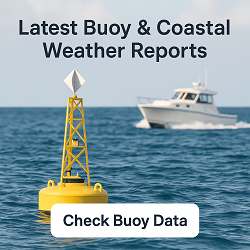Columbine Valley, CO Weather Forecast and Current Conditions
Current Conditions From Nearby Local Station

Feels Like 42°F
at
Current Conditions From Nearby Local Station

Feels Like 42°F
at
Point Forecast at a Glance







7-Day Temperature Trend
Week Ahead Summary
High temperatures climb from 51°F to a high of 77°F by week's end. Dry weather expected throughout the week.
Climate Context
This week's forecast shows temperatures running 10°F above the historical average for October-November. Normal highs for this period are around 57°F with lows around 28°F.
This Date in Weather History
1965 - Fort Lauderdale, FL, was deluged with 13.81 inches of rain, which brought their rainfall total for the month of October to an all-time record of 42.43 inches.
More on this and other weather history
Columbine Valley 7 Day Weather Forecast Details
Friday Oct 31

Day: Mostly sunny. High near 51, with temperatures falling to around 49 in the afternoon. North northeast wind around 7 mph.

Night: Mostly clear. Low around 27, with temperatures rising to around 29 overnight. South southwest wind around 5 mph.
Saturday Nov 1

Day: Sunny. High near 64, with temperatures falling to around 60 in the afternoon. Southeast wind around 5 mph.

Night: Mostly clear, with a low around 41. South wind 2 to 8 mph, with gusts as high as 16 mph.
Sunday Nov 2

Day: Sunny, with a high near 77. West wind 3 to 9 mph, with gusts as high as 16 mph.

Night: Mostly clear, with a low around 38.
Monday Nov 3

Day: Mostly sunny, with a high near 63.

Night: Partly cloudy, with a low around 41.
Tuesday Nov 4

Day: Mostly sunny, with a high near 73.

Night: Mostly clear, with a low around 40.
Wednesday Nov 5

Day: Sunny, with a high near 70.

Night: Partly cloudy, with a low around 42.
Thursday Nov 6

Day: Mostly sunny, with a high near 70.

Night: Partly cloudy, with a low around 37.
Sun & Moon Monthly
Sunrise 7:28 AM
Sunset 6:01 PM
Last Light 6:28 PM
Moonset 1:35 AM

Contiguous United States Extremes
Thu's High Temperature
98 at 2 Miles West Of Pala, CA and 6 Miles West-southwest Of Glamis, CA
Fri's Low Temperature
4 at Peter Sinks, UT
Weather Folklore
Chickweeds close their leaves before a rain.
Current subscribers - login to your ClearSky account
About Columbine Valley, Colorado
The Town of Columbine Valley is a statutory town located in far western Arapahoe County, Colorado, United States. The town population was 1,502 at the 2020 United States census, a 19.59% increase since the 2010 United States census. Columbine Valley is a part of the Denver-Aurora-Lakewood, CO Metropolitan Statistical Area and the Front Range Urban Corridor.
Content from Wikipedia, licensed under CC BY-SA 3.0.
How We Provide Better Local Weather
Current conditions: We use the nearest available station to your location - including professional MESONET/MADIS and local weather stations - often miles closer than regional airports.
Forecasts: National Weather Service point forecasts predict for your specific area, not broad regional zones, making them far more relevant to your location.

